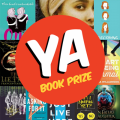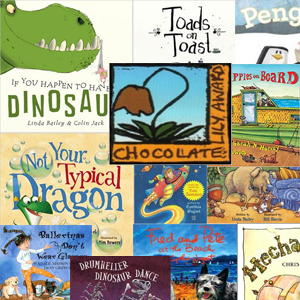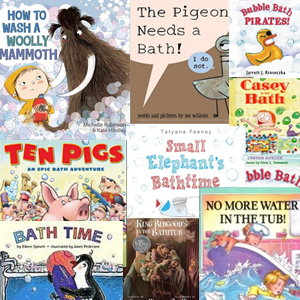STEM Reading List: Lasers
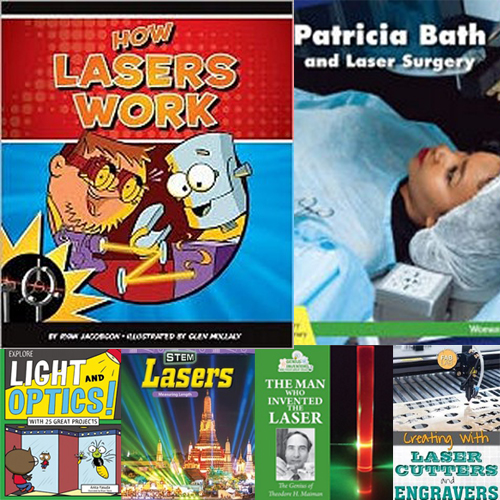
Learn the history of lasers and this cutting-edge field that helps many people in many different ways.
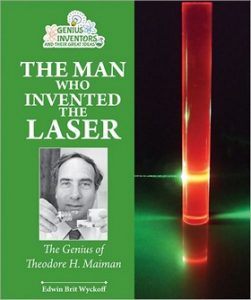 |
The Man Who Invented the Laser: the genius of Theodore H. Maiman By: Edwin Brit Wyckoff The story of Theodore H. Maiman is the quintessential story of committed scientific study, original thinking, and above all, courage and persistence. When World War II started, Maiman enlisted in the Navy and worked on signaling equipment. After the war, he earned degrees in physics and engineering and went to work for Hughes Research Laboratory, where he was tasked with building a laser. His progress, however, was slow and filled with setbacks; but his stubborn refusal to give up resulted in the invention of the first laser in 1960. Wyckoff’s book combines easy-reading text with color photographs and graphics that describe Maiman’s journey through idea, research, and final invention in clear language supported by the helpful visuals. |
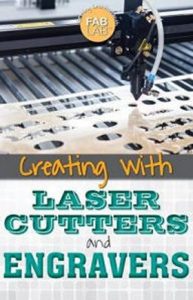 |
Fab Lab Creating with Laser Cutters and Engravers By: Mary-Lane Kamberg This text provides readers with an exploratory lens into the general world of the Fab Lab with an in-depth focus on two specific types of machinery: laser cutters and engravers. These machines give users the unique opportunity to create through the removal of material from its source. Included for readers are hands-on tips and tricks for operating laser cutters and engravers, providing a variety of projects for every experience level, all the while connecting these skills to real-world business models and careers. This title tackles the arts and design element of STEAM more than any other Fab Lab machines do. |
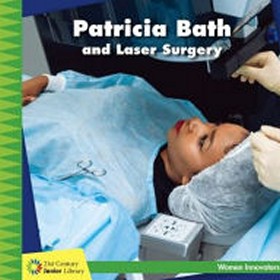 |
Patricia Bath and Laser Surgery By: Ellen Labrecque The 21st Century Junior Library Women Innovators series highlights the contributions of women to STEM fields. Patricia Bath and Laser Surgery examines the life of this important woman and her contributions to ophthalmology and laser surgery. Sidebars encourage readers to engage in the material by asking deeper questions or conducting individual research. Full-color photos, a glossary, and a listing of additional resources all enhance the learning experience. |
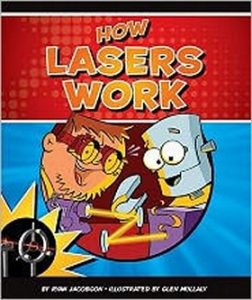 |
How Lasers Work By: Ryan Jacobson Presents information about lasers, including their history, the science behind them, how they work, and how they are used. |
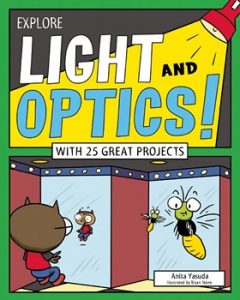 |
Explore Light and Optics! By: Anita Yasuda Imagine a world without light. What would it be like? Dark, cold, and lifeless! In Explore Light and Optics, readers find out why light is so important to our world. We use light to communicate. Because of light, there are natural phenomena such as rainbows and the auroras. And it’s light that provides living things with the energy they need to exist. In this book, readers learn how light travels, how the eye works, and why we can see objects. They read about optical inventions that changed the world, including microscopes, telescopes, and cameras. Kids are introduced to modern inventions such as lasers, solar planes, and the hundreds of thousands of miles of fiber optics that make it possible to transmit data all over the world. Through projects ranging from making a spectroscope and concocting invisible ink to creating a periscope and experimenting with lenses, children discover how light can be bent, bounced, and broken. Facts, jokes, cartoon illustrations, and links to online primary sources illuminate the role light plays in our lives, from the sun shining overhead to the cellphone in our back pocket. |
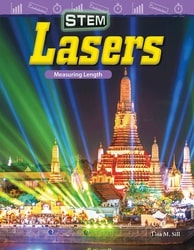 |
Lasers By: Lisa M. Sill What is brighter than the sun, strong enough to reach the moon, and sharp enough to cut tiny holes? Lasers do all this and more! Let a laser-like focus on measuring length shine through as you find out what makes these bright beams light up. This nonfiction math reader builds literacy skills and math content knowledge, combining informational text, problem-solving, and real-world connections to help students explore math in a meaningful way. The Let’s Explore Math sidebars feature clear charts and diagrams that make learning the concepts easy and fun. The Problem Solving activity enhances the learning experience and promotes mathematical reasoning, and the Math Talk section provides critical thinking questions to help facilitate rich discussions while developing students’ speaking and listening skills. Text features include content-area vocabulary, dynamic images, a table of contents, a glossary, an index, and an answer key. Aligned to state and national standards, this high-interest title will engage students in reading and learning. |
